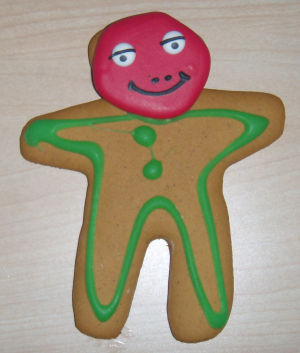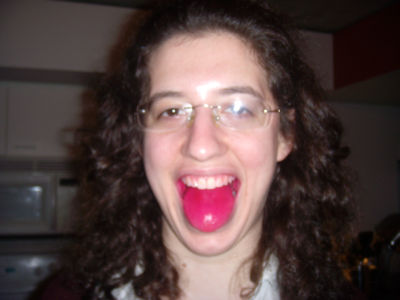The Mismeasure of Stephen and Mr. Wilde in Paradise… Now
Three different media. Three similar themes. There can be only one winner.
…
Um, except there’s not really a contest. So, I saw this movie, went to this play, and read this book, right?
1. THE MOVIE: Paradise Now (2005, dir. Hany Abu-Assad)
Paradise Now is a film about two Palestinian youths, Said and Khaled, who have been recruited as suicide bombers. It’s difficult to watch but utterly engrossing. Here in the West, we like to tell ourselves that suicide bombers’ primary motivations are religious, that the idea of seventy virgins in heaven is the prime motivator; in Paradise Now, Said and Khaled may or may not believe in the Islamic tradition of martyrdom, but their political ambitions are clear as crystal. To them, at least at the beginning, suicide missions are the only way to freedom and equality for a people who can’t afford to fight a traditional war. Don’t mistake humanizing for sanctioning, though: Paradise Now excuses neither suicide bombing nor targeting civilians. In fact, it seems to roundly condemn both. But the questions it raises have no easy answer: when a people seeks to liberate itself from a more powerful nation, can it do so without violence? Is the Geneva convention the luxury of the rich? And, even if you don’t think so, how can you conduct effective negotations and non-violent protests when another faction on your side is intent on getting revenge?
Anyone who thinks the lack of peace in the Middle East is a matter of religious mania or believes that the whole scenario would be easy to solve if only one side would stop being unreasonable ought to watch this film. Just remember to breathe when it’s over.
2. THE PLAY: Stephen and Mr. Wilde (by Jim Bartley)
True fact: in 1882, Oscar Wilde came to North America in order to tour major cities and give lectures on his philosophy of Aestheticism. One of those cities was Toronto. Not-so-true fact: during that tour, he hired as his valet an American ex-slave by the name of Stephen. Very true fact: a play about privileged, wealthy Mr. Wilde, born into the lap of luxury and, as a white British male, power; who believes in the value of Art, Truth, and Beauty; and who can afford to contravene every social more of his times brought into contact with marginalized Stephen, born into slavery and poverty, and, as a black American, oppression; who believes in the value of action and hard work; and who doesn’t have the money to waste on social mores is good stuff indeed.
The core of the show is the interaction between the two title characters, but the script also touches upon the repression of women and the difference between journalistic and artistic truth. The story of Henry Joyce, a fugitive slave who conspired to blow up his sadistic former owner with a well-placed bomb, also has a part to play. Again, there are unanswerable questions: to what extent should violence be done in the name of justice? Can someone who’s lived a privileged life ever understand someone who hasn’t, and vice versa? Are Art and Beauty nothing more than a self-indulgence of the rich, or do they have purpose? And, most importantly, is it ever possible to overcome the lasting effects of monumental past crimes perpetrated by one people against another?
This time, though, a more thorough knowledge of history can change the audience’s impression of the work’s answer. Stephen and Mr. Wilde is a whole different play for anyone who’s read Wilde’s De Profundis, and knows that, in the depths of Reading Gaol, he painfully came to understand the extent to which his life had been an exercise in frivolous luxury. In the end, we are invited to contrast Stephen and Mr. Wilde not with each other but with the newspaperman Hawthorne, who holds up the status quo as Art and the bare fact as Truth. Though Stephen favours practical action and Wilde prefers rhetoric and contemplation, both want to challenge the prejudiced dogma of the majority and change the world. And together, not alone, they can.
3. THE BOOK: The Mismeasure of Man (by Stephen Jay Gould)
Last but not least, Gould’s non-fiction account of the pseudo-scientific justification of the lower intelligence of socially marginalized groups through the Victorian era to the twentieth century is food for thought indeed. As someone studying HPS (History and Philosophy of Science), it doesn’t come as a surprise to me that scientists with existing biases unconsciously manipulate their data to prove, say, that black people are a separate species from whites, or women suffer a permanent childlike mental state, or poor people are biologically “morons”. Still, the sheer amount of horrific conclusions perpetrated in the name of science could sicken even the most steel-stomached among us.
To paraphrase Duhem, there are always mutually inconsistent explanations that fit the data. So, what to you and me looks like a clear case of lower-class people scoring low on IQ tests (which, as Gould points out, were designed not to measure a specific “thing” called intelligence across the general population but rather to identify pupils who would benefit from extra help at school) because their poor environment denies them access to the intellectual and emotional care is to a scientist with the opposite political bias an obvious result of the fact that stupid people are unable to rise to any greater level of success. Cause and effect, or effect and cause?
Gould’s book is accessible to those with little or no background in science or statistics, and it provides a chilling object-lesson of what happens when we don’t question our process of generating and analyzing information – when the Hawthornes of society are allowed unchecked authority. Of course, the very nature of this lesson suggests an immediate course of action upon finishing reading The Mismeasure of Man: take a look at the assumptions Gould made to arrive at his conclusions. But, as so many lazy textbook writers are fond of saying, I leave that as an exercise for the reader.
None of these three works is easy to take, though each has its light-hearted and entertaining moments. But all are rewarding to the thoughtful audience.

The pink dye will be back, stronger than before
